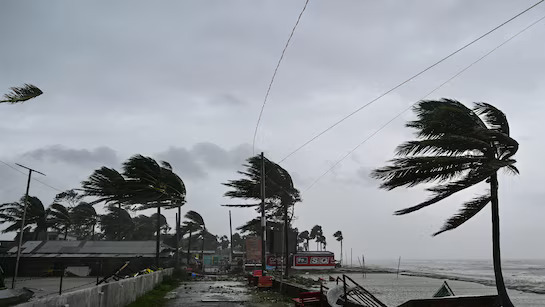Cyclones, those immense forces of nature characterized by their swirling ferocity, carry within them the potential for vast destruction. Despite their formidable power, there exists a meticulously organized system for naming these tempests—a practice initiated over two decades ago in 2004 in the Bay of Bengal and the Arabian Sea. This naming convention plays a vital role in simplifying identification and bolstering awareness about these colossal storms, ultimately contributing to preparedness, communication, and mitigation efforts.
The Birth of Cyclone Naming
The genesis of cyclone naming emerged from a collaborative initiative involving eight nations: Bangladesh, India, Maldives, Myanmar, Oman, Pakistan, Sri Lanka, and Thailand. Each country contributed a set of eight names, forming a rotating roster of 64 names. Notably, India proposed names like Agni, Akash, Bijli, Jal, Lahar, Megh, Sagar, and Vayu. When a cyclone materializes, it is christened using the list provided by the respective country, with names allocated alphabetically.
In subsequent years, this endeavor witnessed expansion. In 2018, Iran, Qatar, Saudi Arabia, UAE, and Yemen joined the coalition, broadening the participating nations to 13. This enlargement led to the creation of an extended list comprising 169 names. These names, such as Arnab, Nisarga, Aag, Vyom, Azar, Prabhanjan, Tej, and Gati, reflect the diverse cultural tapestry of the region.
The Methodology Behind Cyclone Naming
The process of naming cyclones adheres to a systematic framework. Each member of the Panel on Tropical Cyclones (PTC) has the opportunity to name a cyclone alphabetically, ensuring equity and inclusivity. Nevertheless, certain guidelines govern this process: names must not exceed eight characters, should avoid cultural sensitivities, and must eschew provocative connotations.
Beyond mere identification, the naming process facilitates communication and preparedness. It streamlines the dissemination of warnings and enables timely mitigation measures, thereby mitigating the loss of life and property.
Hurricane Naming Practices in America
Across the Atlantic, a similar tradition exists for naming hurricanes. Initiated in 1953 under the auspices of the World Meteorological Organization, this practice initially utilized female names for hurricanes. However, in 1978, the tradition evolved to encompass male names, adhering to the ‘Ad-Even’ formula. Hurricanes occurring in odd years are christened with female names, while those in even years bear male monikers.
The Rationale Behind Hurricane Naming
The naming of hurricanes serves several pivotal purposes. Rooted in the Greek word “cyclos,” meaning a coiled snake ready to strike, the term “cyclone” vividly captures the storm’s swirling nature. Once a cyclonic wind attains a velocity of at least 74 miles per hour, it earns the distinction of a cyclone and is endowed with a name.
The Advantages of Cyclone Naming
The practice of naming cyclones yields multifarious benefits. Primarily, it enhances awareness and facilitates the dissemination of information, enabling meteorological departments and disaster management agencies to communicate warnings effectively. Moreover, it simplifies communication in media and news reports, ensuring that information reaches the public in a comprehensible manner. Lastly, it expedites preparedness and relief efforts by empowering governments and emergency services to strategize and allocate resources efficiently.
Categories of Cyclones
Cyclones are classified based on wind speed. A tropical storm boasts wind speeds of 63 kilometers per hour or more, while a tropical cyclone surpasses 119 kilometers per hour. Cyclonic storms typically exhibit wind speeds ranging from 62 to 88 kilometers per hour, whereas a “super cyclone” demonstrates wind speeds exceeding 221 kilometers per hour.
The Formation of Cyclonic Storms
The genesis of cyclonic storms lies in the convergence of warm air and moisture-laden clouds. As solar radiation intensifies near the equator, sea surface temperatures rise, engendering vapor and hot air that ascend swiftly. This upward motion spawns a low-pressure area, drawing cooler air to fill the vacuum. The interplay between warm and cold air sets the stage for cyclone formation, heralding the birth of these atmospheric behemoths characterized by swirling winds and moisture-laden clouds.
Conclusion
In conclusion, the practice of naming cyclones epitomizes international collaboration and scientific rigor. From the Bay of Bengal to the Atlantic, this tradition serves as a cornerstone of meteorological science, enhancing public safety and fostering resilience in the face of nature’s wrath. As cyclones traverse the world’s oceans, their names resonate with the resilience and unity of humanity in confronting the vagaries of nature.
ALSO RAED: Is the Heatwave Going to Scorch the World?
